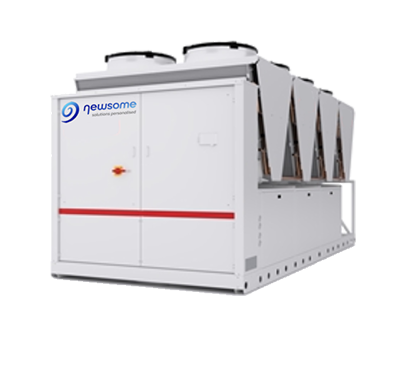Industrial heat transfer refers to the process of transferring thermal energy from one medium to another within various industrial settings. Heat transfer plays a critical role in numerous industrial processes, ranging from manufacturing to factory cooling to energy production. Understanding the principles of heat transfer is essential for optimising efficiency, ensuring product quality, and maintaining safe operating conditions in industrial facilities.
There are three primary modes of heat transfer: conduction, convection, and radiation. Each mode has its own distinct characteristics and applications in industrial processes.
Conduction heat transfer:
Conduction is the transfer of heat through a solid material or between solid materials that are in direct contact. In industrial applications, conduction is commonly encountered in heat exchangers, pipes, and equipment components. For example, heat conduction occurs when hot fluid flows through a metal pipe, transferring heat to the surrounding environment or to another fluid flowing within a parallel pipe.
Convection heat transfer:
Convection involves the transfer of heat through the movement of fluids (liquids or gases). This mode of heat transfer is prevalent in industrial processes such as cooling systems, chillers, HVAC (heating, ventilation, and industrial air conditioning) systems, and chemical reactions involving fluid flow. Convection can be further categorised into natural convection, which occurs due to density differences in the fluid, and forced convection, which involves the use of external mechanisms (e.g., fans or pumps) to enhance fluid movement and heat transfer rates.
Radiation heat transfer:
Radiation is the transfer of heat through electromagnetic waves, without the need for a medium to carry the heat. In industrial settings, radiation is significant in processes such as drying, curing, and thermal processing of materials. For instance, infrared radiation is commonly used in industrial ovens and furnaces to heat and cure coatings, polymers, and composites.
Industrial heat transfer systems often incorporate various heat exchange equipment to facilitate efficient heat transfer between different mediums. Some commonly used heat exchangers include shell-and-tube exchangers, plate heat exchangers, and finned tube exchangers. These devices are designed to maximise surface area contact between the heat source and the heat sink, thereby enhancing heat transfer efficiency.
Efficient heat transfer is crucial for maintaining optimal operating conditions, reducing energy consumption, and ensuring product quality in industrial processes. Engineers and technicians involved in industrial heat transfer must carefully design and operate heat transfer systems to achieve desired performance objectives while minimising costs and environmental impact.
in industrial settings, the management of heat transfer is often a multidisciplinary endeavor, involving expertise in thermodynamics, fluid mechanics, materials science, and process engineering. Engineers and scientists continuously innovate and refine heat transfer technologies to improve efficiency, reliability, and sustainability across diverse industries.
One critical aspect of industrial heat transfer is heat exchanger design and optimisation. Heat exchangers are ubiquitous in industrial processes, facilitating the transfer of heat between fluids while keeping them physically separated. The design of heat exchangers must consider factors such as heat transfer rates, pressure drop, material compatibility, fouling resistance, and maintenance requirements. Advanced computational tools, including computational fluid dynamics (CFD) simulations and finite element analysis (FEA), are often employed to optimise heat exchanger performance and predict thermal behavior under various operating conditions.
Moreover, industrial heat transfer systems must address challenges such as thermal insulation, heat recovery, and waste heat management. Effective insulation materials and techniques are employed to minimise heat loss and maintain temperature stability in industrial equipment and piping systems. Heat recovery systems capture, and reuse waste heat generated during industrial processes, improving overall energy efficiency and reducing environmental impact.
In addition to conventional heat transfer methods, emerging technologies such as heat pumps, thermoelectric generators, and heat pipes are being explored for industrial applications. These innovative approaches offer potential advantages such as higher efficiency, compactness, and versatility in heat transfer operations.
Safety is a paramount consideration in industrial heat transfer operations. Proper design, installation, and maintenance of heat transfer equipment are essential to prevent accidents, such as overheating, leaks, or equipment failures, which could lead to property damage, injuries, or environmental hazards. Robust safety protocols, training programs, and regulatory compliance measures are implemented to mitigate risks associated with industrial heat transfer processes.
Industrial heat transfer is a fundamental aspect of numerous industrial processes, driving efficiency, productivity, and sustainability across various sectors. Advances in heat transfer technologies continue to play a crucial role in improving energy efficiency, reducing environmental impact, and enhancing the competitiveness of industries worldwide. As industries evolve and demand for energy-efficient solutions grows, the importance of effective heat transfer management will only continue to increase.
Overall, industrial heat transfer plays a vital role in a wide range of industrial applications, contributing to the efficient operation and sustainability of various manufacturing and energy production processes. Understanding the principles and mechanisms of heat transfer is essential for optimising performance and ensuring the reliability and safety of industrial operations.

